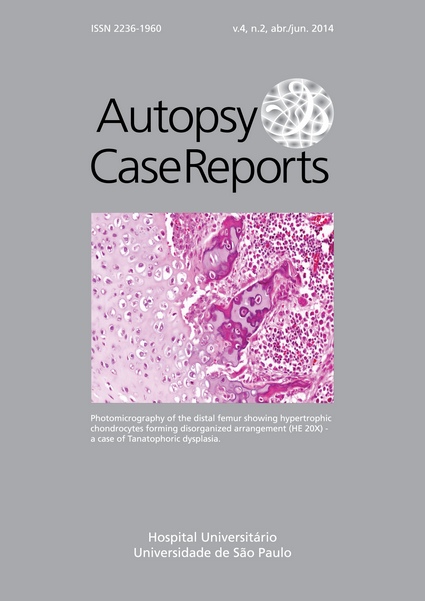Cat-scratch disease presenting as multiple hepatic lesions: case report and literature review
DOI:
https://doi.org/10.4322/acr.%25y.82534Keywords:
Cat-Scratch Disease, Fever of Unknown Origin, Liver AbscessAbstract
Although infectious diseases are the most prevalent cause of fevers of unknown origin (FUO), this diagnosis remains challenging in some pediatric patients. Imaging exams, such as computed tomography (CT) are frequently required during the diagnostic processes. The presence of multiple hypoattenuating scattered images throughout the liver associated with the history of cohabitation with cats should raise the suspicion of the diagnosis of cat-scratch disease (CSD), although the main etiologic agent of liver abscesses in childhood is Staphylococcus aureus. Differential diagnosis by clinical and epidemiological data with Bartonella henselae is often advisable. The authors report the case of a boy aged 2 years and 9 months with 16-day history of daily fever accompanied by intermittent abdominal pain. Physical examination was unremarkable. Abdominal ultrasound performed in the initial work up was unrevealing, but an abdominal CT that was performed afterwards disclosed multiple hypoattenuating hepatic images compatible with the diagnosis of micro abscesses. Initial antibiotic regimen included cefotaxime, metronidazole, and oxacillin. Due to the epidemiology of close contact with kittens, diagnosis of CSD was considered and confirmed by serologic tests. Therefore, the initial antibiotics were replaced by clarithromycin orally for 14 days followed by fever defervescence and clinical improvement. The authors call attention to this uncommon diagnosis in a child presenting with FUO and multiple hepatic images suggestive of micro abscesses.Downloads
Download data is not yet available.
Downloads
Published
2014-06-26
Issue
Section
Article / Clinical Case Report
License
Copyright
Authors of articles published by Autopsy and Case Report retain the copyright of their work without restrictions, licensing it under the Creative Commons Attribution License - CC-BY, which allows articles to be re-used and re-distributed without restriction, as long as the original work is correctly cited.
How to Cite
Baptista, M. A., Lo, D. S., Hein, N., Hirose, M., Yoshioka, C. R. M., Ragazzi, S. L. B., Gilio, A. E., & Ferronato, A. E. (2014). Cat-scratch disease presenting as multiple hepatic lesions: case report and literature review. Autopsy and Case Reports, 4(2), 43-48. https://doi.org/10.4322/acr.%y.82534



